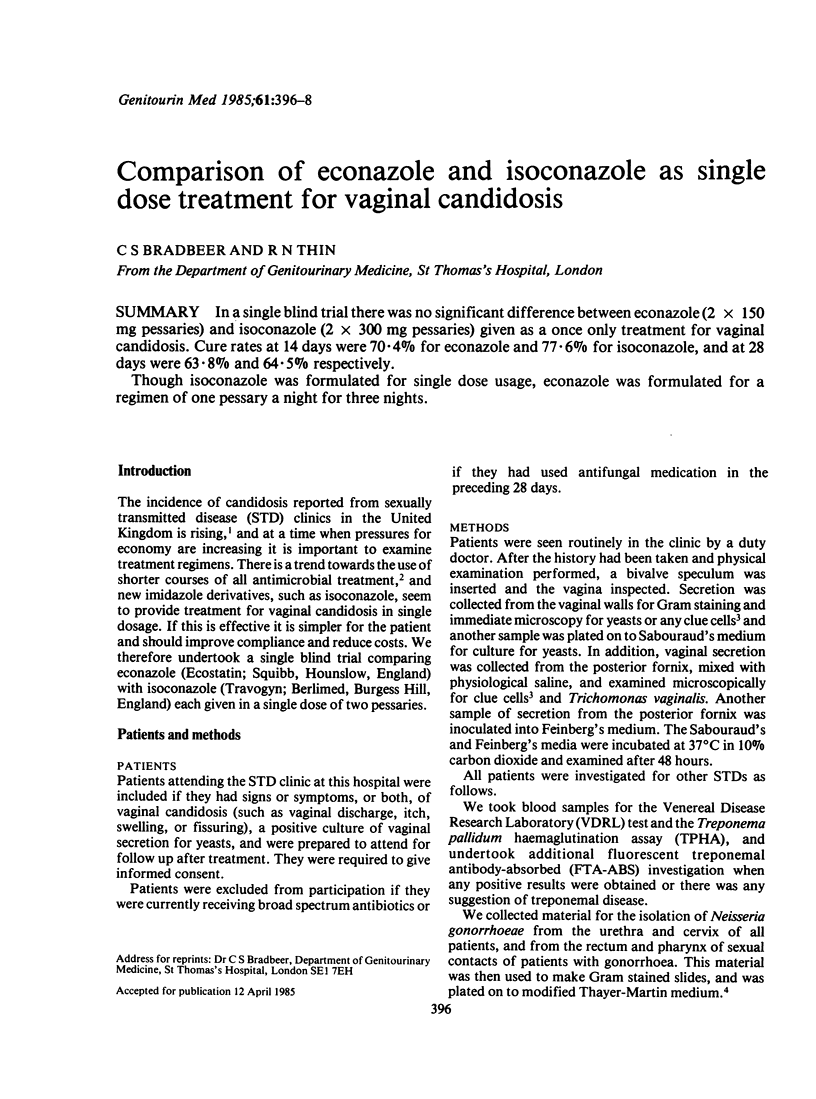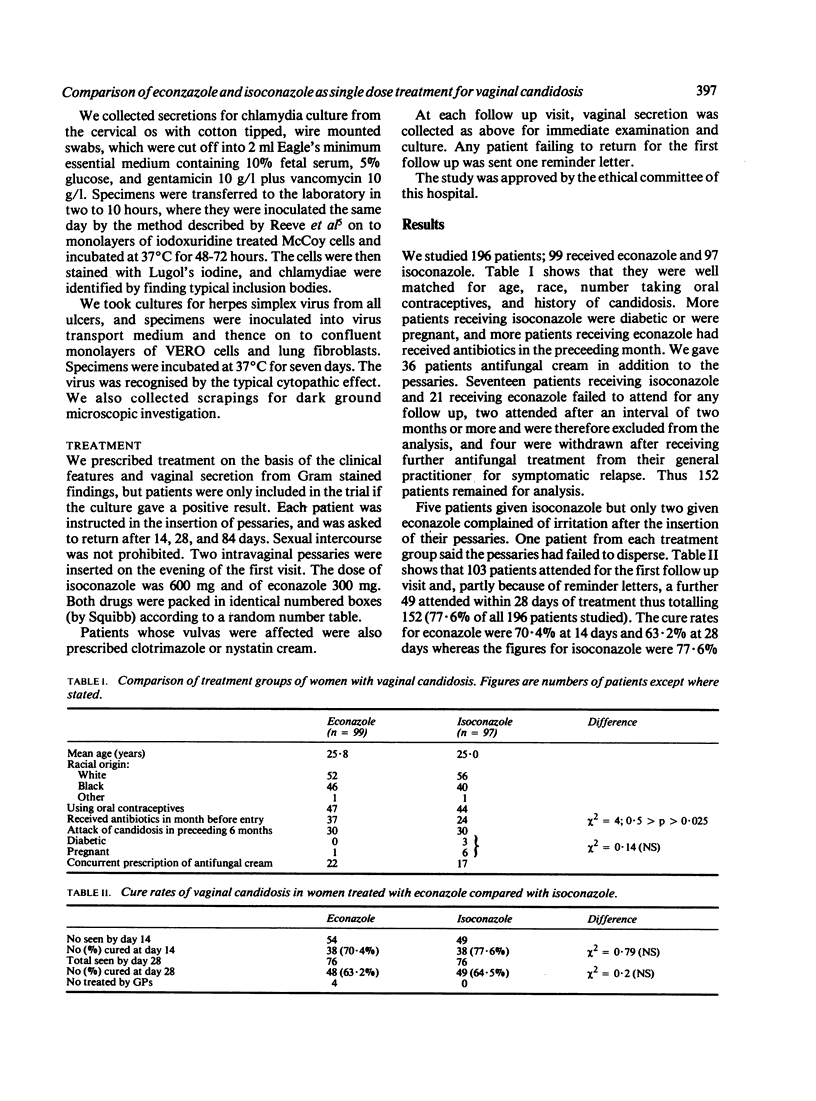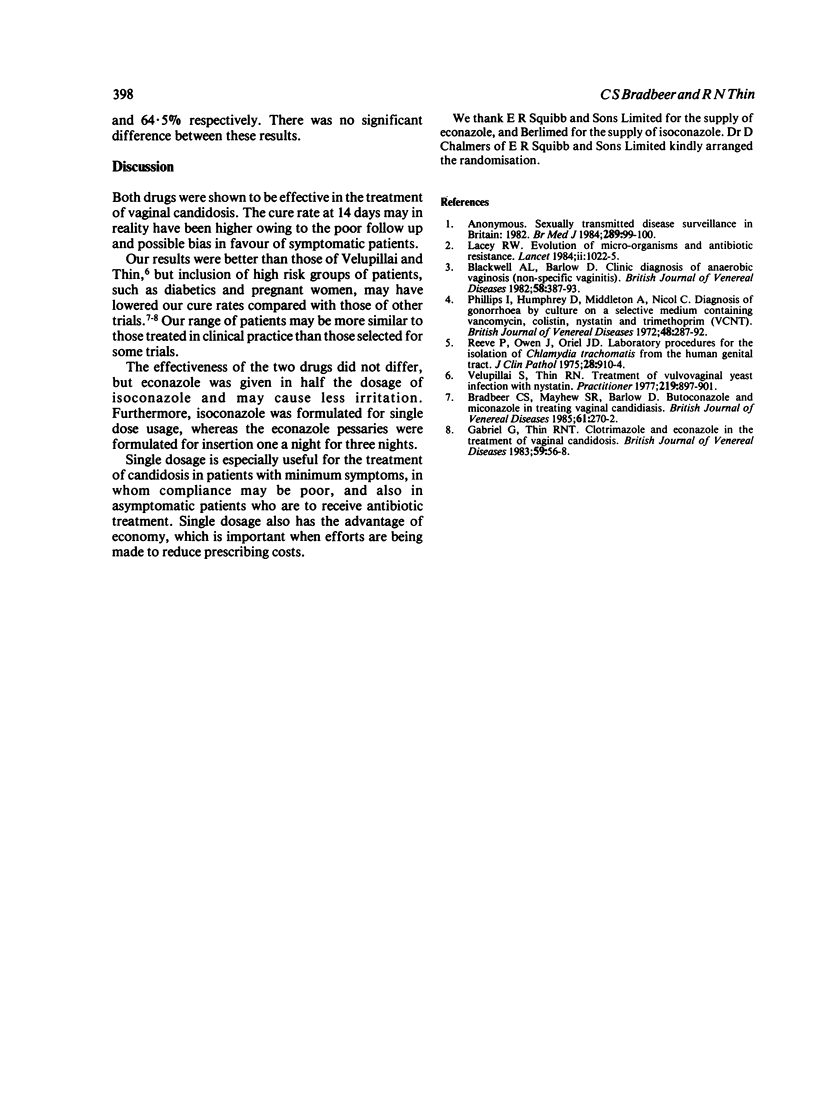Abstract
In a single blind trial there was no significant difference between econazole (2 X 150 mg pessaries) and isoconazole (2 X 300 mg pessaries) given as a once only treatment for vaginal candidosis. Cure rates at 14 days were 70.4% for econazole and 77.6% for isoconazole, and at 28 days were 63.8% and 64.5% respectively. Though isoconazole was formulated for single dose usage, econazole was formulated for a regimen of one pessary a night for three nights.
Full text
PDF


Selected References
These references are in PubMed. This may not be the complete list of references from this article.
- Blackwell A., Barlow D. Clinic diagnosis of anaerobic vaginosis (non-specific vaginitis). A practical guide. Br J Vener Dis. 1982 Dec;58(6):387–393. doi: 10.1136/sti.58.6.387. [DOI] [PMC free article] [PubMed] [Google Scholar]
- Lacey R. W. Evolution of microorganisms and antibiotic resistance. Lancet. 1984 Nov 3;2(8410):1022–1025. doi: 10.1016/s0140-6736(84)91117-6. [DOI] [PubMed] [Google Scholar]
- Phillips I., Humphrey D., Middleton A., Nicol C. S. Diagnosis of gonorrhoea by culture on a selective medium containing vancomycin, colistin, nystatin and trimethoprim (VCNT). A comparison with Gram-staining and immunofluorescence. Br J Vener Dis. 1972 Aug;48(4):287–292. doi: 10.1136/sti.48.4.287. [DOI] [PMC free article] [PubMed] [Google Scholar]
- Reeve P., Owen J., Oriel J. D. Laboratory procedures for the isolation of chlamydia trachomatis from the human genital tract. J Clin Pathol. 1975 Nov;28(11):910–914. doi: 10.1136/jcp.28.11.910. [DOI] [PMC free article] [PubMed] [Google Scholar]


